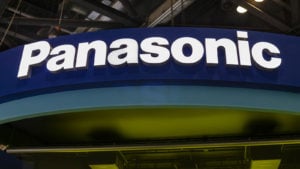Battery stocks often find themselves mired in skepticism due to the complexities of underlying technology. Can the same power that fuels our phones be harnessed effectively for vehicles or homes? Balancing factors like capacity, charging efficiency, and battery durability becomes crucial in this scenario.
As battery technology strides forward to meet escalating demands, the global battery market is forecasted to see robust growth. The market size is predicted to surge at an impressive compound annual growth rate of 15.8%, climbing from $118.20 billion in 2023 to a projected $329.84 billion by 2030.
Despite the recent struggles of Tesla (NASDAQ:TSLA), experiencing a 29% year-to-date slump, the quest for the ideal battery stocks to invest in for April gains even more significance.
The Rise of Microvast Holdings (MVST)

Embarking on our journey with a penny stock gem for a cost-effective entry, Microvast Holdings (NASDAQ:MVST) stands out 37% above its 52-week low of $0.53, currently trading at $0.83 per share. Headquartered in Texas, the company has strategically verticalized its operations to facilitate battery technology deployment for commercial and specialized vehicles.
Microvast showcased its prowess with the development of a high-energy nickel manganese cobalt (NMC) battery. Boasting three battery manufacturing plants and over 630 patents and patent applications, the company evidenced consistent revenue growth from Q1 2021 onwards. An impressive 107.5% year-over-year (YOY) revenue jump to $80.1 million marked the closure of Q3 2023 for MVST.
Most notably, the company witnessed a substantial leap in gross margin from 5.2% to 22.3% YOY, demonstrating successful operational scaling. With its Q4 2023 earnings revealing a $106.4 million loss – the lowest since 2021 and 2022, Microvast Holdings closed the financial year on a positive note. The full-year gross margin of 18.7% compared to 4.4% in 2022 substantiates the company’s growth trajectory.
Panasonic Holdings Corporation (PCRFY)

Presenting itself through American Depositary Receipts (ADRs), Panasonic Holdings Corporation (OTCMKTS:PCRFY) is a stalwart of home electronic solutions. Surging 8.5% from its yearly low of $8.73 to $9.48 per share, Panasonic has transcended its role as a provider of rechargeable batteries for small devices to a tech giant expanding in scale and innovation.
In a strategic move in 2020, the Japanese conglomerate diversified beyond its traditional reliance on Tesla, its long-time partner. Transitioning from supplying Tesla with PHEV2 prismatic cells utilizing NCM/LMO hybrid cathode, Panasonic upgraded to NCM 622 chemistry, setting the stage for collaborations with Japanese automakers like Toyota (NYSE:TM).
Fast forward to the present, Panasonic Holdings Corporation deferred its 4680 battery cells for Tesla due to performance enhancements required. This rollout, expected between April and September, is pivotal for the company’s trajectory. Bolstering this move, PCRFY inked a supply deal with Mazda (OTCMKTS:MZDAY) for cylindrical lithium-ion batteries in March.
Power Play with EnerSys (ENS)

Emerging as a veritable global force in energy storage solutions, EnerSys (NYSE:ENS) focuses on large-scale industrial applications like renewables and telecommunications. Based in Pennsylvania, ENS recently clawed its way 18% above its 52-week low of $79.61, trading at $94 per share.
February saw EnerSys pick Greenville, South Carolina, as the site for augmenting its U.S.-based battery manufacturing capabilities. Utilizing President Biden’s Inflation Reduction Act (IRA), the company anticipates a $200 million green stimulus to fuel a $500 million investment in a cutting-edge 140-acre facility.
The fiscal year Q3 2024 earnings report reflected a 6% dip in net sales to $862 million for EnerSys. While this decline was somewhat anticipated due to the cyclical nature of investments in broadband and telecom sectors, EnerSys managed to surpass earnings per share estimates marginally over the last four quarters.
Furthermore, EnerSys gained traction by participating in the Wells Fargo Clean Energy Symposium, implying its pivotal role in the broader framework focused on steering the net-zero agenda, especially given the stature of Wells Fargo (NYSE:WFC) as a Global Systemically Important Bank (G-SIB).
On the date of publication, Shane Neagle had no direct or indirect positions in the securities referenced. The views expressed are the author’s own and adhere to InvestorPlace.com’s Publishing Guidelines.
Discover Interests: InvestorPlace
Original post available on InvestorPlace.
